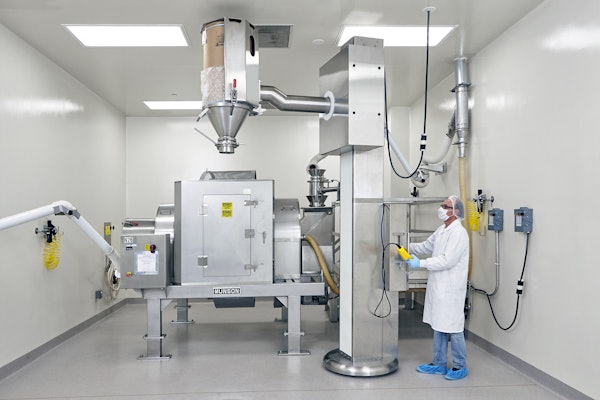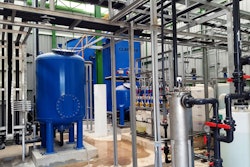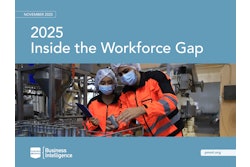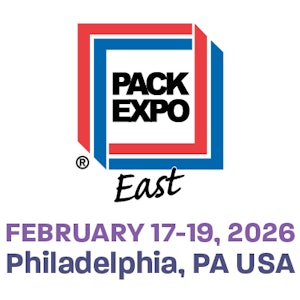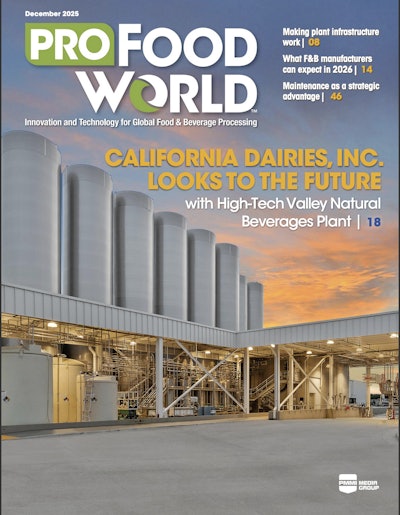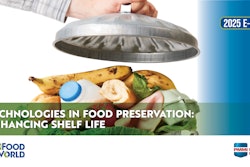Washington Fruit & Produce Company of Yakima, WA, is a family-owed company that has been packing apples and cherries since 1916. The company operates two facilities, River Road South and River Road North, in operation since 2010 and 2015, respectively. According to Washington Fruit System Operator Mikey Hanks, Washington Fruit’s newest plant is “the fastest apple packing facility on earth,” processing an average of 4,000 apples per minute.
In engineering the North facility’s case-palletizing operations, Washington Fruit duplicated a robotic system in use at its South facility supplied by Columbia/Okura LLC. At its previous packing plant—in operation from 1993 to 2010—case palletizing was a manual job requiring up to 12 workers.
For the North facility’s case-palletizing operations, Washington Fruit duplicated technology in use at the South plant, using upgraded software to program a multitude of case sizes and pallet patterns. The company originally began using Columbia/Okura’s systems when it designed its South facility. At its previous packing plant—in operation from 1993 to 2015—case palletizing was a manual job requiring up to 12 workers.
“We didn’t consider automation at the time,” says Hanks. “That’s just how the facility was set up, and it worked. This was back before robotics were really taking off, so it really wasn’t a big deal.”
But with the South facility, Washington Fruit wanted palletizing equipment that could reduce labor as well as the ergonomic complaints resulting from manual stacking. Going into the process, Hanks admits the company didn’t know where to begin. “We didn’t even know what requirements we were supposed to have,” he says.
Introduced to Columbia/Okura through a third party, Washington Fruit presented the equipment supplier with information such as how many items they packed at a time, the number of lanes they wanted, the number of SKUs they wanted stacked at the same time, and the estimated packing speed. With this data, Columbia/Okura specified five robotic palletizing cells each equipped with an A1600 four-axis, multi-articulated robot arm and four lanes. “It just fell into place,” says Hanks.
While the equipment most certainly met Washington Fruit’s initial goal of reducing labor and Labor & Industries claims, the company was surprised to find that an even bigger advantage was the reduction in product damage. “The robots stack better than people do, and they are more gentle with the fruit,” says Hanks. “After 10 hours stacking boxes, you start dropping them a little more, and apples bruise easily.
“Also, since we are stacking the pallets eight-feet tall, it was really hard for operators to gently set a 50-pound box eight feet in the air. So they would tend to just toss them up to the top of the pallet.
“In contrast, the robots gently drop the cases down from about a half an inch above the pallet, so you don’t get any extra bruising.”
Another unanticipated benefit: The robot produces completely square pallets, with the corners of the cases aligned perfectly. This increases the integrity of the case and the pallet, also reducing the chance of pallets tipping over and damaged product.
What is truly impressive about the system, however, is its ability to handle an enormous range of apple varieties, pallet sizes, and pallet patterns simultaneously. The process begins when the facility’s packing line takes apples from a bin that’s been randomly picked from an orchard and runs them through electronic sizing and sorting equipment. For example, in the case of Gala apples, the fruit is first sized and sorted into 17 different sizes, after which they are separated into one of three different grades within those sizes. The apples are then packed into one of 13 different case sizes.
During packing, a license plate serial barcode is stamped onto each case that includes information on the size, grade, and color of the apple, the time of packing, and the orchard the fruit came from. As the cases approach the robotic palletizer in random order, a scanner reads the license plate and directs the case to the proper lane within the proper palletizing cell.
The license plate also directs the palletizing robot as to the correct pallet pattern for each lane. Sixteen different pallet patterns per lane are used at the North facility, while the South plant uses 28 per lane. Each lane also has the option of using one of four different pallet sizes, fed from four different pallet dispensers.
“There are a lot of different variables going into this process, all of which are run from one barcode on the case,” says Hanks.
The robot picks up from one to three 49-lb cases at a time using a clamp-style end-of-arm tool with fingers that grasp the bottom of the box. The gripper was custom-designed by Columbia/Okura for Washington Fruit to accommodate the company’s use of a two-part telescoping box. As Hanks explains, since apples can drift up and down throughout the day, a box can become a little taller or a little fuller.
“Because there’s a slight variance from box to box, when you pick up three boxes, if one of the cases is even one-sixteenth of an inch smaller than the others, the bottom of the case can slide out,” says Hanks. “So the robot has a special ‘hand,’ we call it, that compensates for this.”
When the North system was initially set up, Hanks says Columbia/Okura programmed approximately eight of the pallet patterns, and he set up the rest himself, adding that the software is “a lot more user friendly than it used to be.”
Watch a video on the new facility








